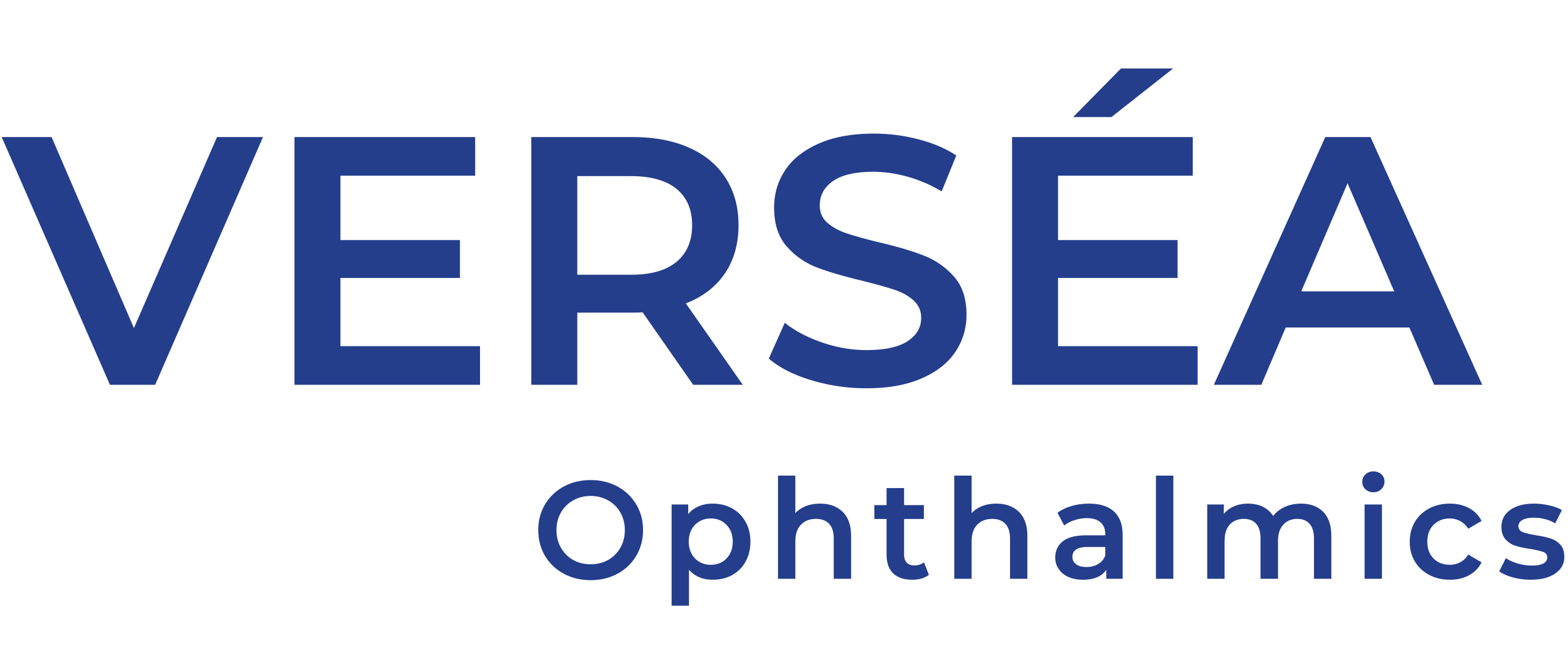Verséa Ophthalmics
Verséa Ophthalmics, headed by Rob Sambursky, MD, President, is on a mission to revolutionize eye care by delivering innovative solutions for the diagnosis, treatment, and management of ocular surface diseases.
A newly launched product portfolio consists of a novel, Tear-based, Point-of-Care (T-POC) quantitative testing platform and complementary allograft therapeutics that will enhance clinical management and inform treatment decisions that ultimately lead to better patient care.
Ocular Immunoglobulin E (IgE) is a biomarker for allergic conjunctivitis, which often mimics dry eye disease or co-exists with dry eye disease.
WHAT IS ALLERGIC CONJUNCTIVITIS
Allergic conjunctivitis is associated with inflammation of the membrane that lines in the inside of the eyelids and leads to redness, itching, and tearing.
Allergic conjunctivitis is an increasingly prevalent as we experience longer allergy seasons and yet severely underdiagnosed due to the lack of rapid point-of-care diagnostic tools. Up to 40% of the U.S. population experiences symptoms of allergic conjunctivitis annually.
More severe acute presentations of allergic conjunctivitis are frequently challenging to differentiate from viral conjunctivitis. A common cause of contact lens or topical medication intolerance is thought to relate to underlying ocular allergies.
The treatment for allergic conjunctivitis is different than for dry eye disease (DED). In dry eye disease (DED), the presence of an allergen often mimics or accentuates the signs and symptoms of DED; thus it is important to assess the presence of an allergic response during an initial Dry Eye evaluation.
TESTING & RESULTS
Total IgE in tear fluid increases with the severity of allergic response. Thus, determination of total tear IgE level is useful not only for making a clinical diagnosis of allergic conjunctivitis but also for the assessment of severity and the response to therapeutic intervention.
The total IgE test has been optimized to provide a quantitative results nearly 50% faster than the non-optimized IgE test with no loss in sensitivity or specificity. Results are available in less than 10 minutes. This improvement will result in quicker patient throughput and give physicians the ability to test and treat double the number of patients suffering from allergic conjunctivitis than they can with their current diagnostic tools.
Test time: ≤ 10 mins
Sample (size and type): 0.5 microliter in tears
Test results: Normal IgE: 40 ng/ml
Sensitivity: 93%
Specificity: 96%
Shelf life: 12 months
Medicare and Private Insurance Reimbursable CPT code: 82785
For more information and to order, contact us at ophthalmics@versea.com, +1 800 3970670 or fill out our Connect With Us form.
Lactoferrin is a key biomarker primarily associated with dry eye disease (DED). It is a protein contained in tears that protects the ocular surface with its antimicrobial and anti-inflammatory properties. Lactoferrin is one of the eye’s main immunological defense mechanisms and plays an important role in the maintenance of ocular health.
WHAT IS DRY EYE DISEASE
The new TFOS and DEWS II definition of dry eye disease refers to the following “Dry eye is a multifactorial disease of the ocular surface characterized by a loss of homeostasis of the tear film, and accompanied by ocular symptoms, in which tear film instability and hyperosmolarity, ocular surface inflammation and damage, and neurosensory abnormalities play etiological roles.”
Dry eye disease is one of the most prevalent ocular surface diseases diagnosed in over 20 million U.S. patients. and is one of the leading causes of patient visits to eye care professionals. An unstable tear film leads to increased inflammation and damage to eye structures and nerves. Moderate to severe dry eye can significantly and negatively impact daily life. Symptoms of DED include eye pain or discomfort, tearing, fluctuating vision, limitations in performing daily activities (e.g. reading, driving, use of digital devices), and ocular fatigue.
Two forms of DED exist, aqueous deficient resulting from reduced tear secretion, and evaporative resulting from excessive tear evaporation. The core mechanism of dry eye disease is evaporation-induced tear hyperosmolarity (higher salt concentration than normal), which triggers a cascade of events leading to ocular surface damage and chronic inflammation.
TESTING & RESULTS
The measurement of ocular lactoferrin, as a biomarker, has long been established and accepted as the “medical standard” in assessing the secretory function of the lacrimal gland.
Low lactoferrin levels directly correlate to aqueous deficiency or hyposecretion of tears. Normal lactoferrin levels indicate normal lacrimal gland function. In contrast, meibomian gland dysfunction leads to increased tear evaporation.
Identification of reduced levels tear lactoferrin allows for the clinical differentiation between aqueous deficient and evaporative DED, leading to more targeted and effective treatment coupled with the ability to evaluate response to therapy.
Test time: 10 mins
Sample (size and type): 0.5 microliter in tears
Test results: High Lf: > 1.0 mg/ml Low Lf: < 0.8 mg/ml
Sensitivity: 83%
Specificity: 98%
Shelf life: 12 months
Medicare and Private Insurance Reimbursable CPT code: 83520
For more information and to order, contact us at ophthalmics@versea.com, +1 800 3970670 or fill out our Connect With Us form.
Learn More About T-POC
Learn More about Biovance 3L Ocular
VerséaOphthalmics
If you would like to learn more about our Tear-based Point-of-Care (T-POC) Testing Platform or Biovance 3L Ocular, please contact us at ophthalmics@versea.com
Subscribe to the Verséa Newsletter

© 2025 Verséa Health, Inc. All rights reserved.
